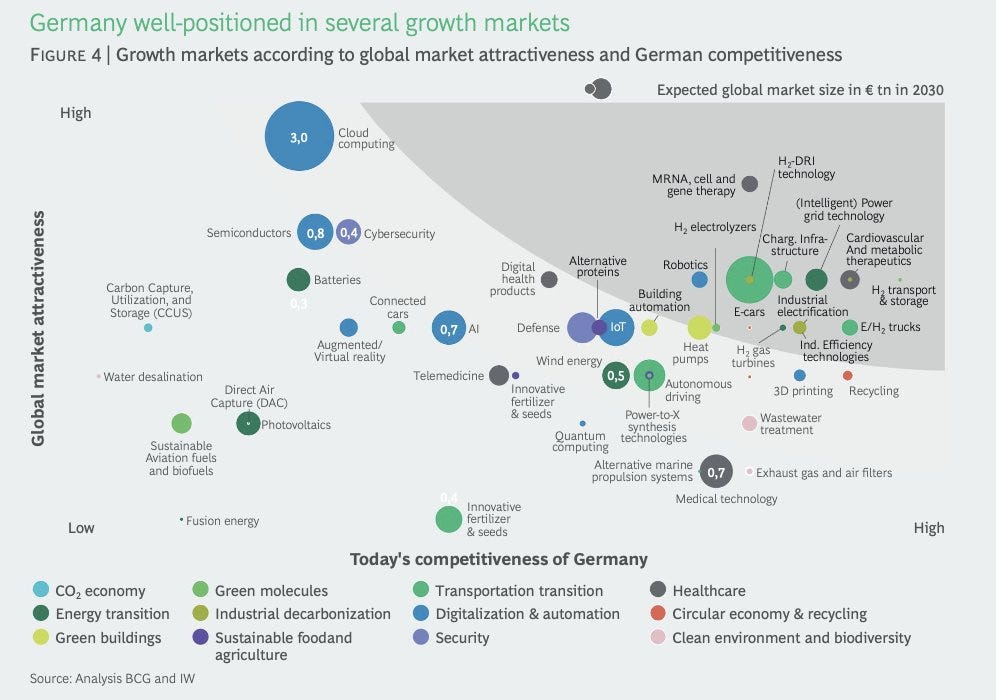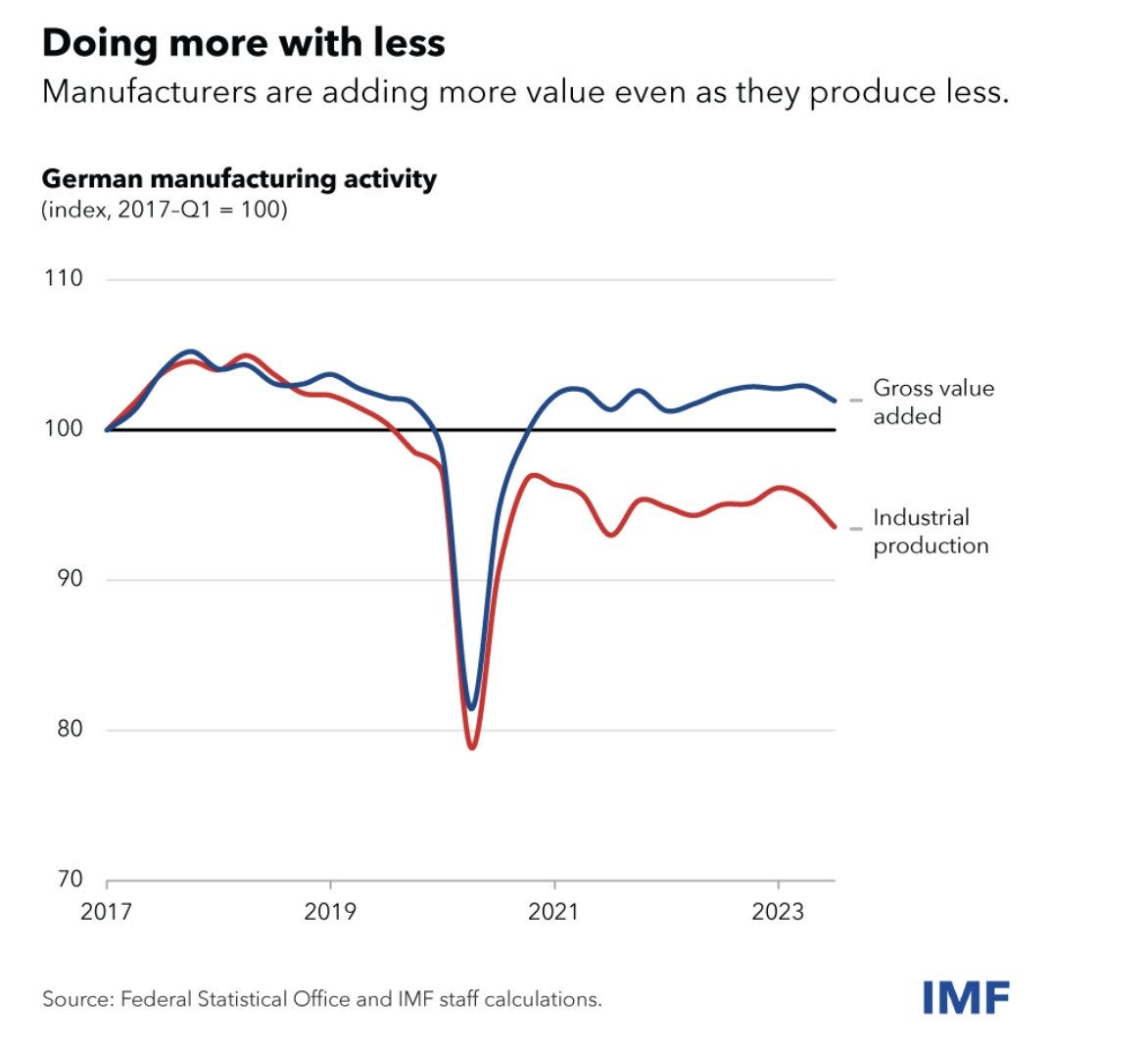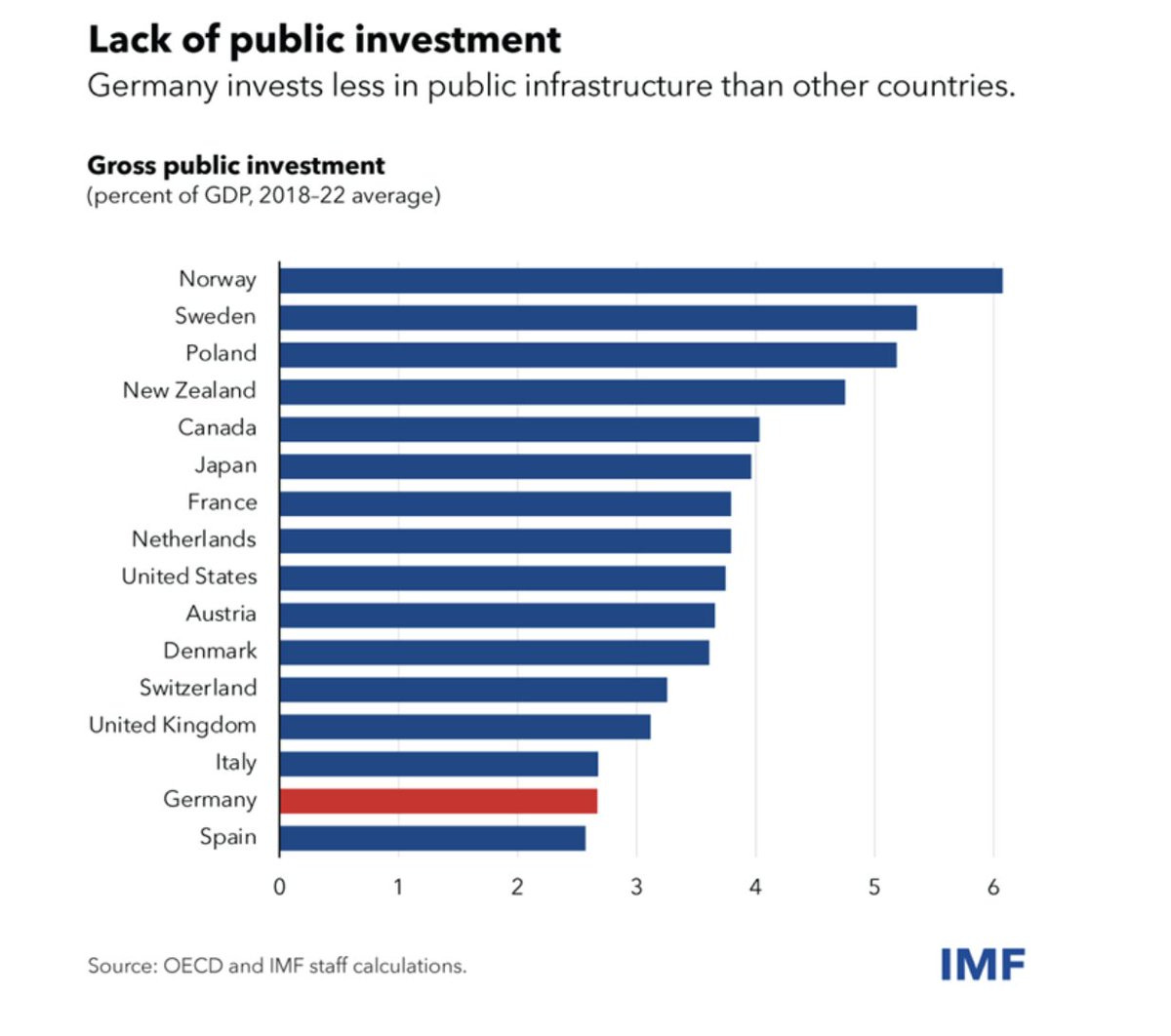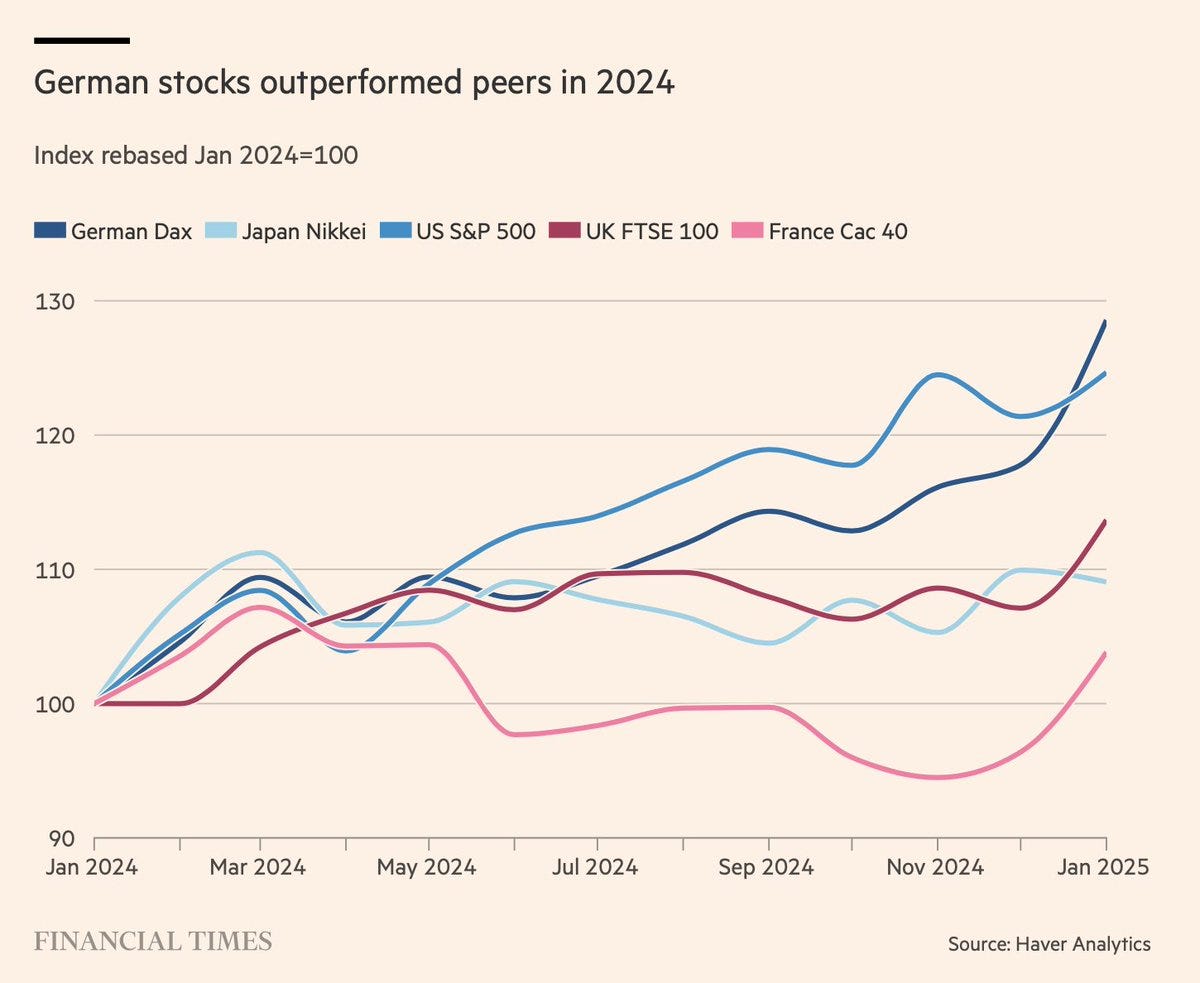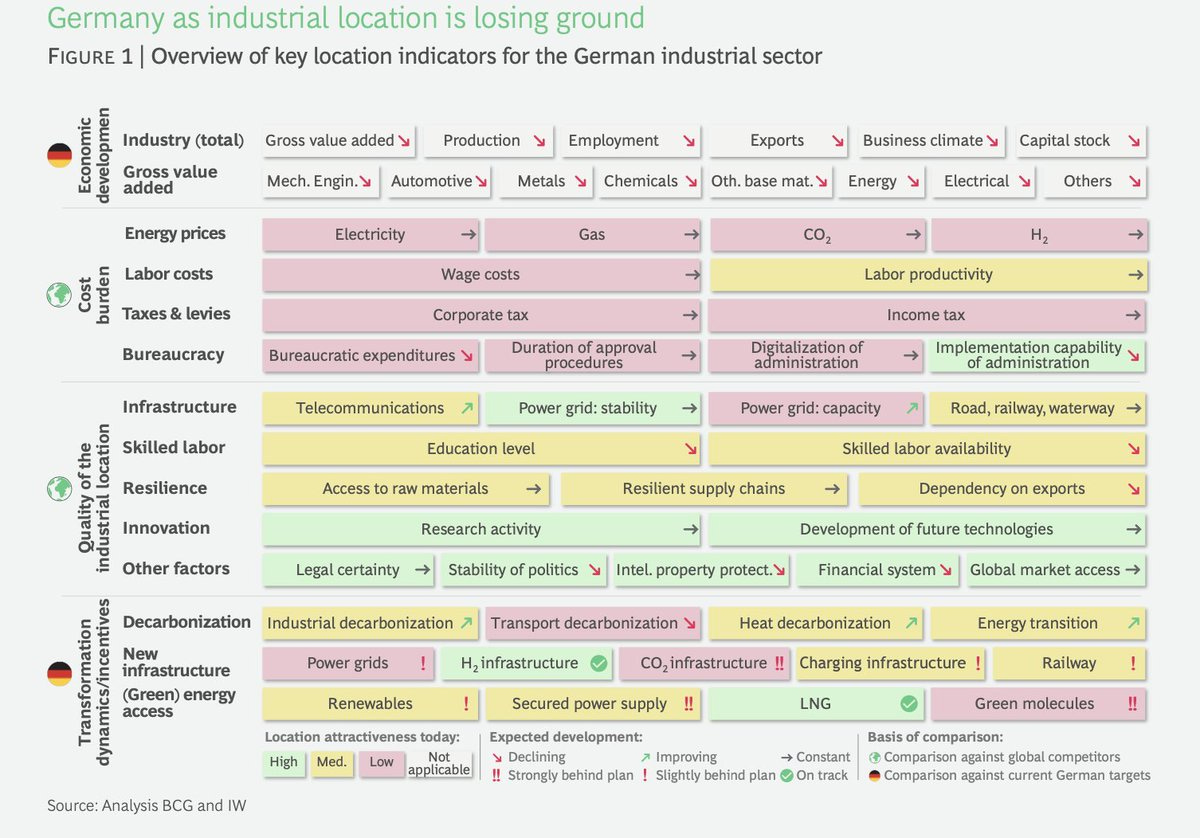As Germany goes today to the polls, its economy is at crossroads.
But is Germany really the sick man of Europe? How sick is it, and can it get better?
Below you can find:
5 reasons why it might actually be just the flu 🤧.
A policy cheat sheet on how to reboot the German economy 🚀.
Germany is capable of great things. And if it manages a comeback, it could reinstate optimism and serve as an example to follow.
The future of Europe and the liberal world depends on it—and we need to be ready for the conversation. 🇪🇺🌍
5 reasons the German economy is stronger than we think
1. The German economy seems actually very well positioned in many growth markets and emerging technologies! 🦾
2. Although the output of Germany's manufacturing sector has fallen in recent years, its gross value added has remained steady! German companies converted to higher value activities, showing strong resilience. 😮
3. German public investment is significantly low compared to other advanced economies. This means that there are huge margins to boost the economy (if Germany chooses to)! 🤑
4. The German stock market has outperformed its competition in 2024. This might be due to initially low expectations but it still goes against the doom and gloom narratives of the past years. 💸
5. Germany has deteriorated as industry location in the past years mainly due to energy prices. However, many factors that hold Germany back (e.g, taxes, bureaucracy) can be improved. ❤️🩹
Policy cheat sheet on how to reboot the German economy
1. Industrial Competitiveness 🏭🏆:
Digitize SMEs & Manufacturing → Expand tax incentives for AI, automation, and Industry 4.0 adoption.
Strengthen Supply Chains → Reduce reliance on China for critical inputs; incentivize EU-based production of semiconductors and rare earths.
Boost R&D & Innovation → Increase tax credits for R&D, support high-tech sectors (green hydrogen, AI, biotech).
Expand Export Markets → Promote trade with India, ASEAN, Latin America, and the U.S. to reduce China dependence.
2. Energy Policy 🔋:
Speed Up Renewable Expansion and nuclear→ Streamline permitting to cut wind & solar approval times in half and reopen nuclear stations.
Ensure Energy Security → Maintain gas as a transition fuel; invest in hydrogen infrastructure.
Cap Industrial Electricity Costs → Temporary price relief for energy-intensive firms to prevent deindustrialization.
Modernize Grid & Storage → Expand grid connections, battery storage, and cross-border electricity trade.
3. Demographic & Workforce Solutions 👨👩👧👦:
Attract Global Talent → Fast-track visas of skilled workers and improve credential recognition
Increase Labor Participation → Expand childcare, reduce tax penalties for secondary earners, incentivize longer working lives.
Strengthen Vocational Training → Update apprenticeship programs for tech & green jobs.
Pension Reform → Gradually raise retirement age, promote private savings to ease long-term pressures.
4. Regulatory & Tax Reforms 🏛️:
Slash Bureaucracy → Set maximum approval times for permits; digitize business registration.
Lower Corporate Taxes → Reduce corporate tax rate to ~25% to match EU competitors.
Encourage Startups → Ease stock option taxation, expand VC funding incentives.
Make Labor Market More Flexible → Reduce hiring/firing complexity to boost job creation.
5. Innovation & Digital Economy 🤖:
Invest in AI & Automation → Increase funding for AI research, support AI adoption in industry.
Expand Digital Infrastructure → Achieve full 5G & fiber-optic coverage by 2025.
Encourage Tech Startups → Expand venture capital funding, create startup-friendly regulations.
Improve Digital Skills → Introduce nationwide coding & AI training in schools.
6. Trade & Geopolitical Strategy 🌍:
Diversify Trade Partners → Expand exports beyond China to India, Africa, ASEAN, and Latin America.
Strengthen EU Trade Leadership → Push for EU-wide agreements to secure new markets.
Reduce Supply Chain Vulnerabilities → Stockpile critical materials and build European alternatives.
Geopolitical Risk Strategy → Establish a national economic security council to manage trade risks.
7. Infrastructure & Housing 🏡:
Fix Roads, Rail & Bridges → Increase infrastructure investment to 3.5% of GDP.
Fast-Track Housing Construction → Cut permitting times for new homes by 50%, expand public-private partnerships.
Incentivize Affordable Housing → Offer tax breaks for new construction, expand rental subsidies where needed.
8. Fiscal & Investment Strategy 🤑:
Adjust Debt Brake for Investment → Allow borrowing for infrastructure, digital, and green projects.
Stimulate Private Investment → Introduce targeted tax credits for R&D, startups, and manufacturing upgrades.
Enhance Public Spending Efficiency → Ensure allocated budgets translate into real projects through better execution.
Avoid Pro-Cyclical Austerity → Maintain fiscal discipline while enabling strategic investments.
Thank you for reading the Europragmatist.❤️
Please share this article to keep the conversation going.
Stay tuned in the next days for innovative ideas to unite and reboot the EU! 💙💛




